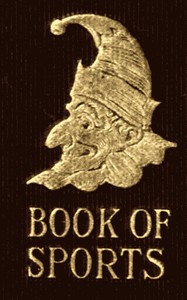The Confessions of a Caricaturist, Vol. 2 by Harry Furniss (novels for teenagers .TXT) 📖

- Author: Harry Furniss
Book online «The Confessions of a Caricaturist, Vol. 2 by Harry Furniss (novels for teenagers .TXT) 📖». Author Harry Furniss
The truth of the matter was, several snakes were at the same time found in gardens of private houses close to the Zoological Menagerie. "Mr. A. B. Edwards" wrote, from an address close to the Zoo, to the Daily Telegraph, a few weeks after my finding the cause of all the snake sensation:
"This afternoon we were taking tea in our garden when we saw a snake 2 ft. long frisking on the lawn close to our feet. Fortunately one of our fowls had got loose from the cage, and came to pick up the crumbs. When it caught sight of the snake it pounced upon it, and a great battle was fought between fowl and serpent. After ten minutes' hard fighting, the snake lay dead. Your readers may be interested to hear of this, and, being forewarned, they will be forearmed against snakes in their gardens."
The Westminster Gazette, à propos of this:
"'Lika-Joko's' snake may now crawl away into its native insignificance when it reads of the exploits of its comrade, who preferred death to captivity."
But my snake did not crawl away; far from it. The man in the reptile house, who "looked puzzled" and grinned, and had to grope about the sand at the bottom of the case to find the snake for the edification of the Westminster Gazette interviewer, did not grin to that purpose for long. Never before in the history of the Zoo was the reptile house so crowded. Day after day people thronged to see the specimen of Coronella lævis found on the path in Regent's Park. Not one looked at the two splendid specimens of the largest and finest and fiercest snakes bought that very week by the Zoological Society, at a cost of three hundred pounds. My snake was valued at anything between sixpence and eighteenpence, but it brought more money to the turnstiles of the Zoo than all the other snakes put together in twenty years.
From an address not half-a-mile from the gates of the Zoological Gardens a gentleman wrote to the World about a snake he found in his garden. A London and North-Western guard found a boa-constrictor, 22 feet long, in his van! "The son of a well-known Member of Parliament" found a huge snake in one of the rooms of his father's London house. In[Pg 226] fact, snake-finding became an epidemic, and if I had come across any more of the ophidian brood, I would have feared the consequences. Alas! the British public killed my snake—as it has killed many another celebrity of the hour—by too much attention and flattery. But how the cause of all this excitement got on to the path in the centre of Regent's Park remains a mystery. I feel certain myself it had escaped from the Zoological Gardens through the drains, and the fact that others were discovered in the vicinity of the Park at the same time explains the confusion and mild chaff accepted by the Westminster interviewer as a complete explanation, forgetting that officialism when criticised is much the same all the world over.
 THE LADY AND HER SNAKES.
THE LADY AND HER SNAKES.
"The Harrow School Boy" correspondent—probably a very old boy—is not alone in his strange choice of pets. A lady who had sent her pet snakes to the Zoological Gardens—not by "The Roving Rook Post," but by the usual course of presentation—happened to visit the Gardens at the time that other great attraction was drawing all London, the great Jumbo craze. When she arrived to see the elephant of the hour, the crowd was so dense around his cage that there was no chance of getting a peep, so she marched off to the reptile house and soon returned with one of her pets coiled round her neck. She took her stand close to the people engaged in struggling to pat the trunk of the Jumbo, feed it with the most expensive sweetmeats, decorate it with choice flowers, and weep bitter tears over its impending departure. (The public of the present day can hardly realise the excitement over this favourite elephant.) Struggling at the same time to be prominent in this Jumbo worship, however, the head of a snake appearing suddenly over one's shoulder is too much for some of us. One after another the visitors vanished as the snake thrust its head near them, and soon the ingenious lady had the place and Jumbo to herself.[Pg 227]
She was not a professional "snake-charmer," but an eccentric lady of private means; her pet was large, but harmless. Strange to say, about the same time a company of Japanese "snake-charmers" were causing a sensation at a show in the West End of London by their performance with snakes of a well-known dangerous species. Some of the reptiles they performed with fell sick—languid and useless for sensational show-work. They were despatched to the "Zoo" by the manager to be looked after—possibly the climate affected them. They would not eat anything, and were gradually pining away, when it was discovered that their poison-fangs had been extracted, and their mouths were sewn up with silk. Charming, certainly!
Having lived close to the Zoological Gardens for over twenty years, and being a Fellow of the Society, I have spent a great deal of enjoyable time rambling about its ever-interesting collection. The "Zoo" is very like London itself—one never exhausts its interest. There is always a surprise in store for those even most intimately acquainted with it. One suddenly comes across an object of interest that has existed in the place for years, but one has not happened to pass at the moment that object appears. How many visitors to the "Zoo," for instance, have ever seen the beavers at work? To see them, the most interesting animals in the collection, one has to go very late or very early. Knowing old Mr. Bartlett as I did, I frequently saw interesting events, and heard from him interesting tales of the Gardens.
Another letter of mine to the Times took the form of a confession. It was what was described in the Press as "a humorous, yet withal pathetic complaint" (December, 1895) respecting the irritating inconvenience caused by so-called "modern conveniences," which do not always act satisfactorily. I had been driven to "let off steam" (which is better accomplished through a pen than with a pencil) by my experience in one week of the modern inventions which are designed to facilitate business and to benefit the public generally, and I still seriously question if these wonderful inventions and the extra expense incurred by adopting them are not a mistake.[Pg 228]
The working of the telephone has become, of course, a farce, and the sooner the Government take it up the better. Several large business houses have given it up, and in the working of the telephone London, which ought to be the most favoured, is probably the most unfortunate city of any in the world. I have tried half-a-dozen times in one day to ring up different people on the telephone without succeeding in getting through, and have had to send notes by hand.
 DO WOMEN FAIL IN ART? THE CHRYSALIS.
DO WOMEN FAIL IN ART? THE CHRYSALIS.
The electric light is another disappointing "improvement." It has gone out four times in one week, and we had to use candles and lamps.
Then the District Messengers' wire, which I had in communication with my house, would not act. I rang up for a cab; no response. I rang up again; nothing came. I sent out for a cab, and was late for dinner. The next day a representative called casually to inform me that we could not use the wire for two or three days, as something had gone wrong.
I then tried the phonograph; but I had more correspondence about it than I had through it.
A plague on these experiments in the advancement of science intended to facilitate our work and add to our comfort! The electric light kills our sight; the telephone destroys our temper; the District Messenger call ruins our dinner; and, conjointly, they waste our time and deplete our purses.
When there was a controversy in the Daily Graphic I wrote in the interests of women to make one confession:
Do women fail in art?
Confession—Certainly not.
In the opinion of many, women fail in nothing, but base man[Pg 229] fails in appreciating women in art as in everything else where appreciation of talent is due. The fashion-plate young lady, with her doll's face, her empty head, and her sawdust constitution, monopolises all the attention that selfish man can afford to give outside thoughts about his own sweet self.
Every year we see some work in the Academy from the easel of a woman which is far better than many of the works exhibited by Academicians, and although when that selfish body was being formed there were not enough men to supply the number of figure-heads required, and two women were requisitioned to launch the ship, all the gratitude shown to the sex has been years of continued insult. Yet there are certain Academicians who paint like women for women, and instead of leaving it to women receive all the honour and remuneration; and those having this feminine art and spirit behave the worst to those whom they copy. The pretty-pretty pictures of conventional coquetries which we have served up year after year by the chefs of this pastry of art might be concocted by the dainty fingers of the lady artist just as well as, or even better than, by the effeminate man who takes her place and robs her of her honours. But after all, are not the women themselves to blame? Art, I hold, is nowadays purely a commercial affair. Burlington House is simply a huge shop, and it is all nonsense to talk for one instant about the encouragement it gives to art, or to take seriously the prosy platitudes which are poured forth year by year at that picture tradesmen's dinner—the Royal Academy Banquet. Women are not invited—women, forsooth, whose works on the walls have done their share towards bringing the shillings to the turnstiles of the Academy. But more ridiculous still is the omission of lady patrons of art, for it is well known that this feast is given with two objects—to advertise the coming show, merely "chicken and champagne" in theatrical phraseology, and to feast Mr. Crœsus, who buys the pictures of his host.
 THE BUTTERFLY.
THE BUTTERFLY.
Now, it is the influence of women that makes the majority of men buy pictures. Few men buy pictures to please themselves; they buy them to please their wives. Why women are not patronised in art is for this simple reason, that women would[Pg 230] rather patronise the work of a fool, if that fool be a man, than the work of a genius, if that genius happen to be a woman. I agree with Mrs. Jopling, that "with men success is reached with a fair wind and every favour, while with women those only succeed who have the power of weathering many storms." Quite true. Grace Darling will row out to help some feeble man struggling in the billows of incompetency, but she will sit on a rock and see a woman sink before she will stretch out a helping hand. If women fail in art, it is because women fail to help them, and I hold that but for women we might even to-day find the Royal Academy incapable of forming a quorum without calling in lady artists, as they did before. I see that the two ladies most qualified to speak about this subject disagree on the most essential point. Mrs. E.M. Ward gives it as her opinion that if women studied with the same quiet devotion as the male student they would be more successful; but Mrs. Louise Jopling asserts that young girls show quite as much disposition for art as young men do. I have no hesitation in saying that the latter opinion is the correct one. The male art student vies with the medical student in playing the fool. A friend of mine has recently been driven out of his studio, which was situated next to an art school, by the asinine behaviour of these "quiet devotional students." But in any school I have been through I have noted with astonishment the painstaking sincerity of the lady students.
All that has been written on the subject from time to time seems to me to be quite devoid of common sense. We all know[Pg 231] what a delightful poet Mr. Sterry is, and how fondly he sings the praises





Comments (0)